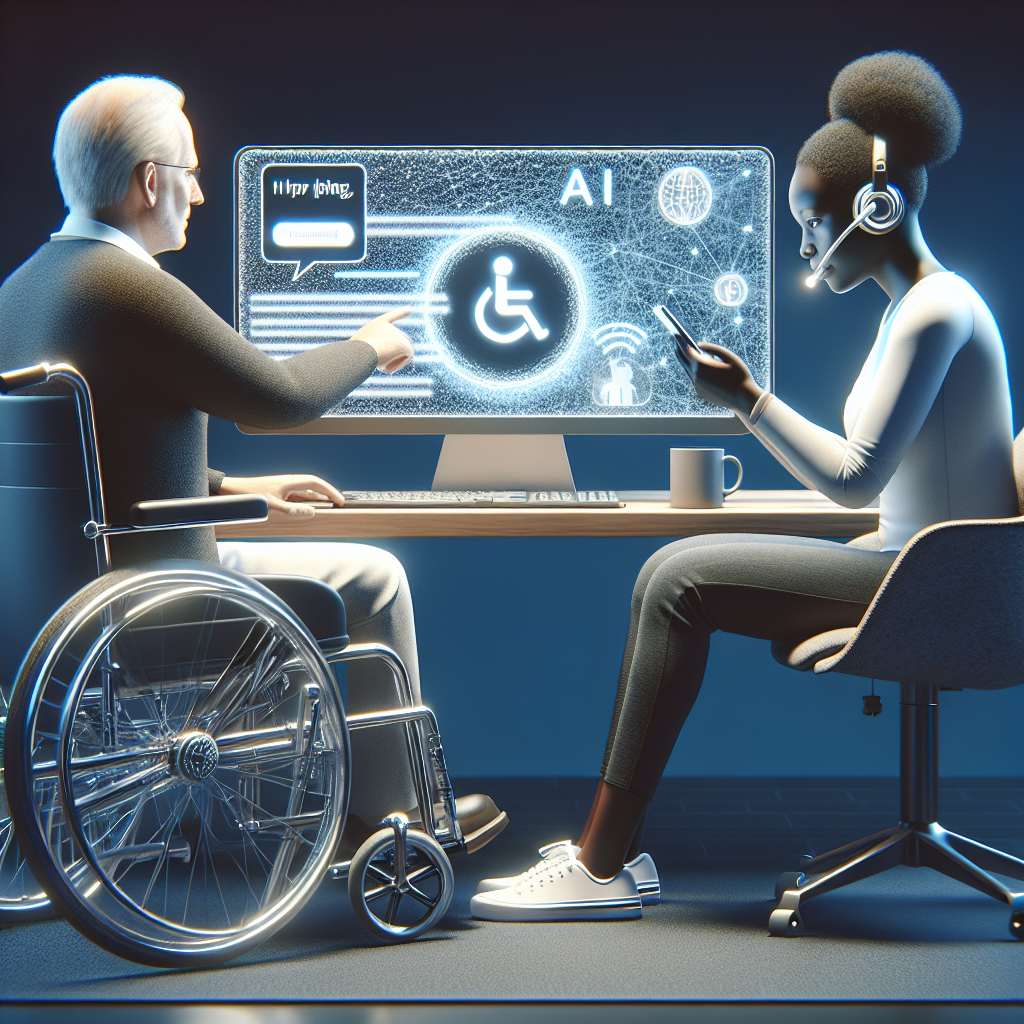Conversational AI: A Tool for Improving Accessibility for People with Disabilities
In recent years, Conversational AI has emerged as a powerful tool for improving accessibility for people with disabilities. Conversational AI refers to technology that allows humans to communicate with machines using natural language, such as speech or text. These technologies, which include virtual assistants like Siri, Alexa, and Google Assistant, as well as chatbots and other automated systems, have the potential to greatly enhance the lives of people with disabilities by providing them with new ways to interact with technology and access information.
Conversational AI can help people with disabilities in a variety of ways. For example, individuals who have physical disabilities that limit their ability to use traditional input devices like keyboards or touchscreens can benefit from voice-controlled virtual assistants. These tools allow users to perform tasks like sending messages, making phone calls, and browsing the web using just their voice, eliminating the need for complex physical interactions.
Similarly, people with visual impairments can benefit from conversational AI by using screen readers that can read aloud text on websites and other digital content. This allows individuals with visual impairments to access information that would otherwise be inaccessible to them. Additionally, conversational AI can help people with cognitive disabilities by providing reminders, schedules, and other forms of assistance that can help them navigate their daily lives more effectively.
One of the key advantages of conversational AI is its ability to adapt to the specific needs of individual users. For example, virtual assistants can learn from users’ interactions and preferences over time, allowing them to provide more personalized and effective assistance. This level of customization can be particularly beneficial for people with disabilities, who may have unique needs and requirements that traditional technology solutions are not able to address.
Conversational AI can also help to reduce barriers to communication and social interaction for people with disabilities. For example, individuals who have difficulty speaking or hearing can use text-based chatbots to communicate with others in real-time, allowing them to participate in conversations and engage with others in ways that may not have been possible before. This can help to combat feelings of isolation and loneliness that are all too common among people with disabilities.
Furthermore, conversational AI can help to make public spaces and services more accessible to people with disabilities. For example, virtual assistants can be integrated into public transportation systems, allowing users to check schedules, plan routes, and access other information without the need for physical interaction. Similarly, chatbots can be used to provide information and support for people with disabilities in a variety of settings, such as hospitals, schools, and government offices.
In addition to improving accessibility for people with disabilities, conversational AI can also benefit businesses and organizations by providing them with new ways to engage with customers and clients. For example, companies can use chatbots to provide customer service and support in a more efficient and cost-effective manner. Similarly, organizations can use virtual assistants to provide information and assistance to employees, helping them to be more productive and successful in their work.
Overall, conversational AI has the potential to greatly improve the lives of people with disabilities by providing them with new ways to access information, communicate with others, and navigate their daily lives. By harnessing the power of this technology, we can create a more inclusive and accessible society that benefits everyone.
FAQs
Q: What are some examples of conversational AI technologies?
A: Some examples of conversational AI technologies include virtual assistants like Siri, Alexa, and Google Assistant, as well as chatbots and other automated systems that allow users to interact with machines using natural language.
Q: How can conversational AI help people with disabilities?
A: Conversational AI can help people with disabilities in a variety of ways, such as providing voice-controlled interfaces for individuals with physical disabilities, screen readers for people with visual impairments, and personalized assistance for those with cognitive disabilities.
Q: How can businesses and organizations benefit from conversational AI?
A: Businesses and organizations can benefit from conversational AI by using technologies like chatbots and virtual assistants to provide customer service, support, and information to their clients and employees in a more efficient and cost-effective manner.
Q: How can conversational AI improve accessibility in public spaces?
A: Conversational AI can improve accessibility in public spaces by providing users with new ways to access information and services, such as public transportation systems, hospitals, schools, and government offices.
Q: How can conversational AI be customized to meet the needs of individual users?
A: Conversational AI can be customized to meet the needs of individual users by learning from their interactions and preferences over time, allowing it to provide more personalized and effective assistance.

